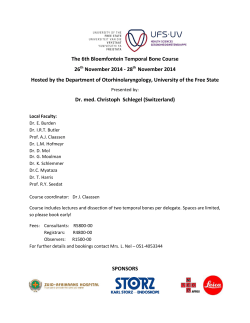
Equipping Robots with Temporal Cognition
Perception of Time in Actions: Equipping Robots with Temporal Cognition Time perception is a fundamental capacity of autonomous living biological and computational systems that plays a key role in the development of intelligence. In particular, time is important for encoding, revisiting and exploiting experiences (knowing), for making plans to accomplish timely goals at certain moments (doing), for maintaining the identity of self over time despite changing contexts (being). In this regard, our main aim in this project is to equip robots with a sense of time, which remains unexplored in the context of autonomous artificial systems. As shown in our recent work [Wächter and Asfour, 2015], we can parse individual primitives of human demonstrated manipulation actions by considering object relations and motion characteristics of the hand. This yields an accurate estimation of both length and order of the temporal information in each action primitive. Given the high level primitives, we want to address the generalization of the concept of time for actions. In other words, we would like to augment the action representation with time duration. In this sense, our action segmentation approach has to be simulated with the NeMo*, which is a high-performance spiking neural network simulator. In a simulated environment, the robot has to learn how to organize the temporal order of various parallel and sequential action streams to achieve a complex task, e.g. “setting a table”, by considering all possible interruptions in the scenario (Fig. 1). Note that this proposed topic is supported by the European Union project TimeStorm which studies the principles of time processing in the human brain and their replication cognitive agents. Figure 1: Perception of Time in Actions: Equipping Robots with Temporal Cognition. On the left it is shown that a human demonstrated action can be decomposed into primitives, each of which has a specific trajectory pattern. Temporal length of these observed primitives should be simulated with the simulator NeMo*. NeMo* : nemosim.sourceforge.net Wächter M., Asfour T. “Hierarchical Segmentation of Manipulation Actions based on Object Relations and Motion Characteristics”. International Conference on Advanced Robotics, 2015. Contact: Eren Erdal Aksoy (eren.aksoy@kit.edu) and Tamim Asfour (tamim.asfour@kit.edu)
© Copyright 2025














